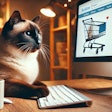
Adapted from a press release:
Pet care, including dog, cat and other companion animal foods, has grown even during times of constrained wallets. In 2023, pet care outpaced the rest of store departments in terms of dollar growth, both online (+13.4%) and in-store (+5.0%), according to Nielsen IQ.
As online purchasing becomes more prevalent—taking up 39% of total pet care sales—the percent of buyers and dollars happening exclusively online saw increases, while the percent of buyers and dollars happening exclusively in-store saw declines.
With this, almost 80% of all dollars spent on pet care are by shoppers using both brick-and-mortar and “.com” options, with online growing share due to continued use of subscription-based purchasing.
“As online continues to grow, the thing that we continue to watch drive some of that online growth is subscription,” Andrea Binder, vice president of retail account development at NielsenIQ, said during her Global Pet Expo 2024 presentation on March 21 in Orlando, Florida, USA. “We get asked about this quite a bit.”
1. Pet food price inflation
As inflation has crept up in all areas of the store in the past few years, pet care was among the few departments outpacing total store in inflation per item. As of February 2024, average unit prices in the pet care department were over 9% higher than they were the previous year.
2. Private label growth
As budgets get tighter, private-label brands have become more prevalent. Across the store, private labels’ share of wallet and basket has been increasing, with 19.5% of dollar share and 21.6% of unit share. For pet, private label hasn’t seen change in dollar or unit share against name brands, with private label making up 17% of dollar share and unit share in 2023. With this, poundage has shifted from 1/5th 2020 to over 1/4th in 2023.
“Private label, it really steadily has been growing year after year after year,” Sam Smith, associate client director at NielsenIQ, said during Global Pet Expo 2024.
Though private label takes up less dollar share and unit share compared to name brands, a vast majority (73%) of consumers are buying both. In addition, private label is being purchased by a wide variety of consumers, but is most popular with those whose household income ranges from 25K to 50K, and those aged 65-79.
3. Top consumers
Certain demographics are seeing some substantial growth. Gen Z and Asian households are outpacing others with a +10.5 and +9.4% buy rate, respectively.
“None of them are down,” Smith said regarding all demographics. “Everybody is spending more. Everybody is making more trips and spending more per trip. The entire industry still kind of in that boom.”
As pet ownership becomes increasingly intertwined with lifestyle choices and cultural norms, these demographics are emerging as key players in the pet products market, indicating a shifting landscape of pet care preferences and spending habits.

















